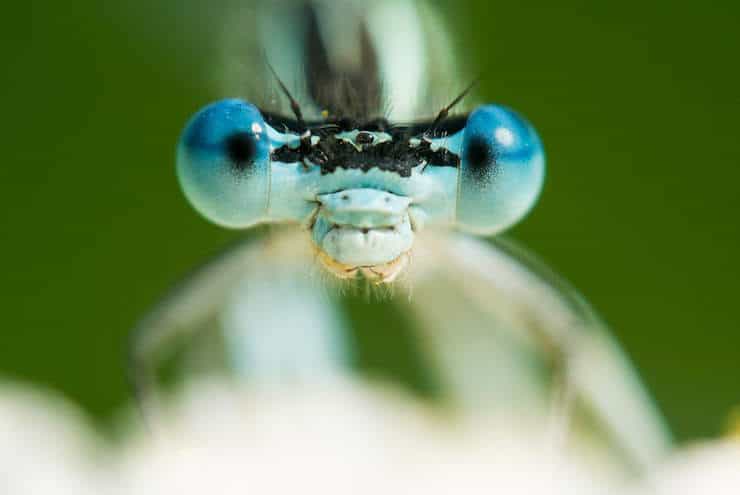Have you ever wondered if insects have brains? Can creatures so tiny as mosquitoes or even bees have brains inside their skulls?
The short answer is yes, insects do have brains, and surprisingly, quite sophisticated ones.

Just like our own, insect brains are complex structures divided into specific regions, each designated to handle certain types of information. Although the form, shape, and regions of an insect brain may not resemble ours, some functional similarities do emerge.
Specialized parts of insect brains
The brains of most insects are in essence similar. They contain the same regions, though the relative size and shape of the regions can vary highly. The main parts of the insect brains are:
- antennal lobes are where insect brains process information coming from antennae. Since antennae deal with the chemical properties of stuff around the insect, it might be comparable to the olfactory bulb of mammals, a location where we process scents. Though this part is not that large in humans since we do not deal with odors that much. Antennal lobes are relatively large in all insects, but even more so in ants, bees, and moths who rely highly on scents in their communication, foraging, and mating.
- mushroom bodies are sort of a switchboard that receives information from different parts and processes it and sends it further. It has high involvement in learning and memory in insects. Yes, insects have memory. Functionally, a mushroom body is similar to what the hippocampus and amygdala do in a mammal brain, though in parts that would be a stretch. It’s relatively largest in bees and other social insects which rely on complex behavior for the survival of their nest.
- optic lobes are as the name suggests mostly about vision. And, of course, this part is the largest in insects that rely on vision. Thus, predatory insects, such as dragonflies, or pollinators, such as bees, again. An easy way to tell is by the size of their eyes. Since eyes sit right on top of optic lobes, the size of these organs is comparable.
- central complex is a place where most of the sensory information is processed. It is involved in movement, orientation, memory of the surroundings, and others. It is responsible for complex behaviors, but there is no analog region in our brain, functions insect brains perform in the central complex are scattered around in mammalian ones.
So, as you can see, insect brains are very different from ours in the way they are built, but striking similarities can be seen on a larger scale. Why is it so? It’s because they have evolved separately, but for the same functions, from the same precursors.
Independent rise of insect and mammalian brains
The different organization of insect and mammal brains is not the only testimony that these brains have evolved separately. We also can see that among many groups of animals of the same descent, only three groups stand out.
Independent evolution of similar things (scientifically called convergent evolution) occurs when organisms face the same problem in separate situations.
For example, if an animal needs to regulate leg movements, only a handful of viable solutions exist. The eye has evolved at least eight times independently, and each time the end result has been quite similar. Why?
There are only a number of ways how physics allows us to convert light information to electric impulses in the nervous system.
Insects, mammals, and octopuses and squids all have complex brains, yet many animals of the same descent do not. Standalone branches in an evolutionary tree point to independent evolution.
Our common roots with insects
Our last common ancestor with insects (and squids) lived around 570 million years ago. We think it was flatworm-like, but we can’t be sure how complex its nervous system was.
Probably it had a long nerve cord along its body, with some concentrated nerve cell regions along the whole lengths. Quite similar to what we see in today’s flatworms.
However, we are not sure how complex was its frontal nerve region. Regardless, definitely not very complex, since the complexity that we see in mammals and insects, looks strikingly different.
However, what has remained, is the basic functioning of individual nerve cells. They use similar neurotransmitters, these signaling molecules that help neurons communicate. You might have heard that serotonin and dopamine is critical to your mood and self-esteem. True that, flies, mosquitoes, and ants also have these two molecules working their brain. Why?
Because, though quite differently, the basic functioning of the brains of humans and that of insects, are the same. This similarity allows scientists to study insect brains, and gen valuable insights about the brains of our own.
To sum up, yes, indeed insects have brains. They are complex ones and work similarly to ours. They are what makes many of insects very smart, solve difficult problems, and even form complicated social structures. At the same time, the organization of insect brains is strikingly different from that of ours. There are still regions devoted to different tasks, yet the form geography of the brain is somewhat alien.